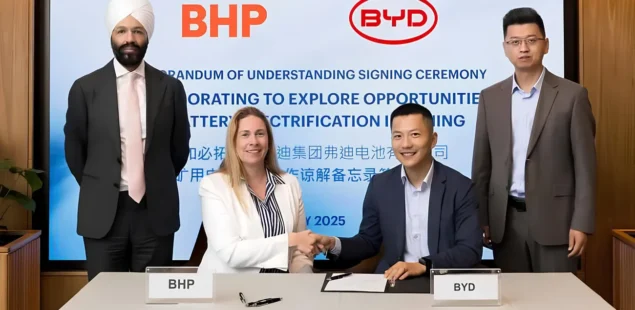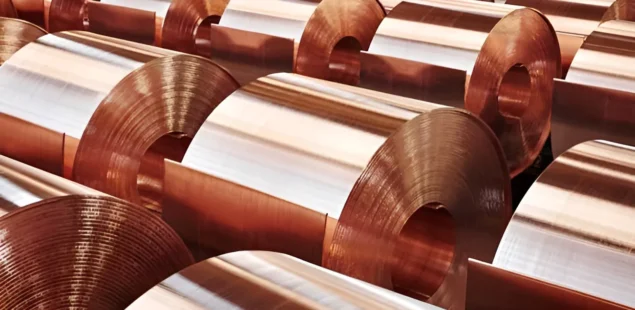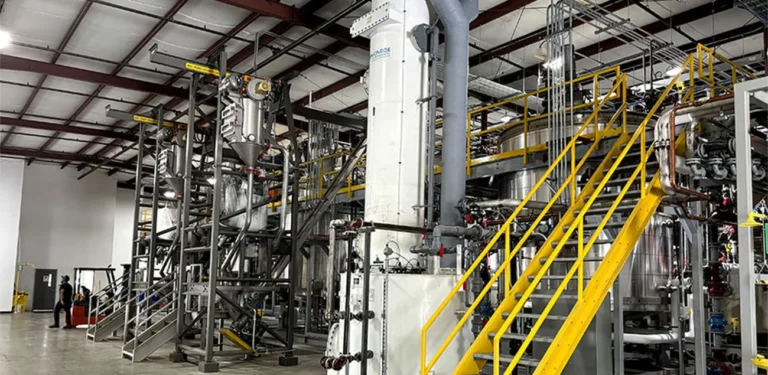
US Imposes 25% Tariff on Aluminium Imports
The United States is set to impose a 25% tariff on aluminium imports, affecting shipments from all countries. However, the exact implementation date and additional details have yet to be disclosed by US authorities.
During his first term, former President Donald Trump had already introduced a 10% tariff on aluminium imports, initially exempting Canada and Mexico. These exemptions were later removed, but in 2019, the three countries agreed to eliminate the tariffs. Under President Joe Biden, the US and the European Union reached an agreement in 2021, allowing limited duty-free aluminium imports from Europe. In 2023, the US imposed a 200% tariff on Russian aluminium, followed by a 10% tariff in 2024 on aluminium not produced in Mexico.
The US faces a significant primary aluminium deficit, producing only 750,000 tonnes of primary aluminium and 3.3 million tonnes of secondary aluminium annually while importing nearly 5 million tonnes of semi-finished aluminium products. The new tariffs aim to stimulate domestic production and processing but could also lead to excess supply in the global market. Aluminium producers may redirect exports originally intended for the US to other regions, exacerbating supply-demand imbalances.
Meanwhile, US aluminium consumers may face challenges. Alcoa, which operates plants in both the US and Canada, warned in January that a 25% tariff on Canadian aluminium would significantly impact US consumption. The company estimated that the policy could cost American consumers $1.5–2 billion, potentially dampening demand and disrupting the stability of the aluminium supply chain.
Trafigura Escalates Legal Battle Against Indian Partner
The legal dispute between international commodities trader Trafigura and Indian businessman Pratik Gupta has reached a new phase.
Since 2015, Trafigura had partnered with Gupta for nickel shipments, purchasing nickel already loaded onto ships and reselling it upon arrival. However, in December 2022, Trafigura representatives inspecting containers at the port of Rotterdam found that they contained ordinary steel instead of nickel.
In response, Trafigura launched legal action in the UK in 2023 against Gupta and affiliated companies, including TMT Metals, UIL (Singapore), and Vadox. The company estimates its losses at nearly $600 million. Gupta denies all allegations, arguing that Trafigura either orchestrated the fraud or was complicit in it.
In January 2025, Trafigura petitioned a New York court for access to bank records related to transactions by companies and individuals linked to Gupta. Judge Paul Oetken granted the request, allowing subpoenas to be issued to banks such as Bank of China, Barclays, JP Morgan, Standard Chartered, and UBS. These banks are not involved in the case, and the subpoenas were issued without a hearing.
Trafigura aims to trace financial flows associated with Gupta and his wife, Jeannie, hoping to strengthen its chances of recovering losses if successful.
Ivanhoe Mines and Pallas Resources Target Kazakhstan’s Copper Reserves
Ivanhoe Mines and Pallas Resources have established a joint venture to explore Kazakhstan’s Chu-Sarysu copper basin.
The agreement covers up to 16,000 square kilometers, leveraging geological data collected during the Soviet era. Ivanhoe Mines has committed $18.7 million to exploration over two years and has already launched a tender to select a contractor for an aerogeophysical survey.
The Chu-Sarysu copper basin, located in southern Kazakhstan, consists of thick Upper Paleozoic sedimentary formations and is known for hosting large copper deposits such as Dzhezkazgan. Globally, the basin ranks third in size after the Central African Copper Belt and Europe’s Kupferschiefer, with an estimated 25 million tonnes of undeveloped copper reserves, along with lead, zinc, silver, and strontium.
Ivanhoe Mines plans to apply its experience from the Democratic Republic of Congo, where it has developed similar copper-bearing sedimentary formations.
The announcement follows Rio Tinto’s growing interest in Kazakhstan’s copper resources. In December 2023, Rio Tinto Exploration Kazakhstan secured two exploration licenses in the Ulytau region for approximately 196 million tenge. Despite investing in multiple Kazakh exploration projects since 2015, Rio Tinto has yet to discover commercially viable copper deposits.
Cobalt Prices Drop to 15-Year Low Amid Market Shift
Cobalt prices on the London Metal Exchange have fallen to $21,500 per tonne, their lowest level since 2010 when cobalt futures trading began.
The price decline reflects shifting market dynamics: while supply has surged, demand is weakening due to changes in electric vehicle battery technology. Western automakers have traditionally used nickel-cobalt-manganese (NCM) batteries, but their production growth is slowing. Meanwhile, Chinese manufacturers are increasingly adopting lithium-iron-phosphate (LFP) batteries, which do not require cobalt.
In 2023, electric vehicle sales rose by 36% in China but only 9% in North America, while the European Union saw a decline. This trend has reduced global demand for cobalt.
At the same time, cobalt supply is expanding, driven largely by China’s CMOC Group, which doubled its production in 2024, adding 60,000 tonnes to a global market with a total capacity of just over 200,000 tonnes. CMOC Group’s TFM and KFM mines in the Democratic Republic of Congo produced 114,165 tonnes of cobalt in 2023 and are expected to deliver 100,000–120,000 tonnes in 2024.
Cobalt is a byproduct of copper and nickel production, meaning that as Indonesia ramps up nickel output, its cobalt supply also increases. The growing reliance of Western countries on cobalt from Chinese producers remains a concern. Without alternative pricing mechanisms, the market may not recover soon. Macquarie Bank forecasts a global cobalt surplus lasting until at least 2028.
China’s Copper Rod Output Falls 20% in January
China’s copper rod production dropped 20% year-over-year in January to 716,000 tonnes, with capacity utilization at 51.99%.
The decline was primarily due to the Chinese New Year holiday, which halted business activity for two weeks. Rising global copper prices also played a role: copper prices on the London Metal Exchange climbed from $8,768 per tonne in early January to $8,928 per tonne by the month’s end, reducing orders from processors.
The production decline varied by region: in eastern China, output fell 9.16% to 478,900 tonnes, while in southern China, it dropped 16.76% to 106,300 tonnes.
By the end of February 2025, copper rod production is expected to recover to 737,700 tonnes, with a projected capacity utilization rate of 53.56%. However, new orders are likely to remain weak due to volatile copper prices, which affect both buyer demand and production profitability.
China remains the world’s top copper producer. In 2024, its copper cathode output increased by 5.4% to a record 12.1 million tonnes. The country is also the largest producer of copper rod, a key material in cable and wire manufacturing for the energy and industrial sectors.



